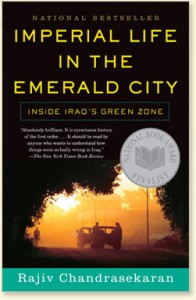Imperial life in the emerald city Henrik Emilsson
I need to recommend a great book by Rajiv Chandrasekaran: Imperial Life in the Emerald City.
The reason I recommend this book on this blog is that the more I think of it, the more I think it resembles the way how certain processes or methods are implemented in the sofware industry without taking the context into account.
I.e. this book is a great example on how to implement something in a non-context-driven fashion!
Right now, somewhere in the world, test processes are implemented:
* that are not tailored to the needs of the majority of the affected people;
* that will make it harder for the people involved to do a good job;
* that look ridiculous;
* that are best practices according to XXX;
* because of political reasons;
* because someone said so;
* etc…
When reading this book, you will sometimes laugh out loud.
But at the same time you wanna cry when you realize that this actually have affected thousands of people and indeed a whole nation. It is really scary…
Below is an excerpt from the authors’ site http://www.rajivc.com/book.htm

“Imperial Life in the Emerald City is an unprecedented account of life in Baghdad’s Green Zone, a walled-off enclave of towering plants, posh villas, and sparkling swimming pools that was the headquarters for the American occupation of Iraq.The Washington Post’s former Baghdad bureau chief Rajiv Chandrasekaran takes us with him into the Zone: into a bubble, cut off from wartime realities, where the task of reconstructing a devastated nation competed with the distractions of a Little America—a half-dozen bars stocked with cold beer, a disco where women showed up in hot pants, a movie theater that screened shoot-’em-up films, an all-you-could-eat buffet piled high with pork, a shopping mall that sold pornographic movies, a parking lot filled with shiny new SUVs, and a snappy dry-cleaning service—much of it run by Halliburton. Most Iraqis were barred from entering the Emerald City for fear they would blow it up.
Drawing on hundreds of interviews and internal documents, Chandrasekaran tells the story of the people and ideas that inhabited the Green Zone during the occupation, from the imperial viceroy L. Paul Bremer III to the fleet of twentysomethings hired to implement the idea that Americans could build a Jeffersonian democracy in an embattled Middle Eastern country.”